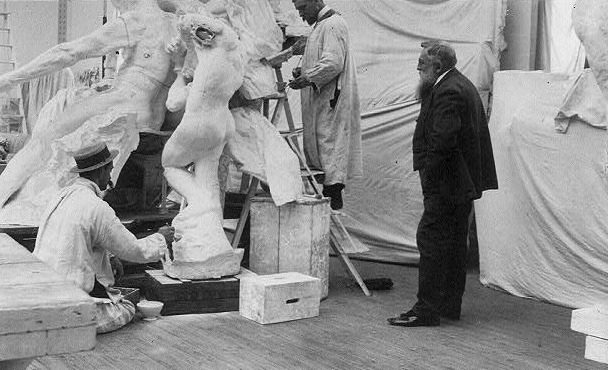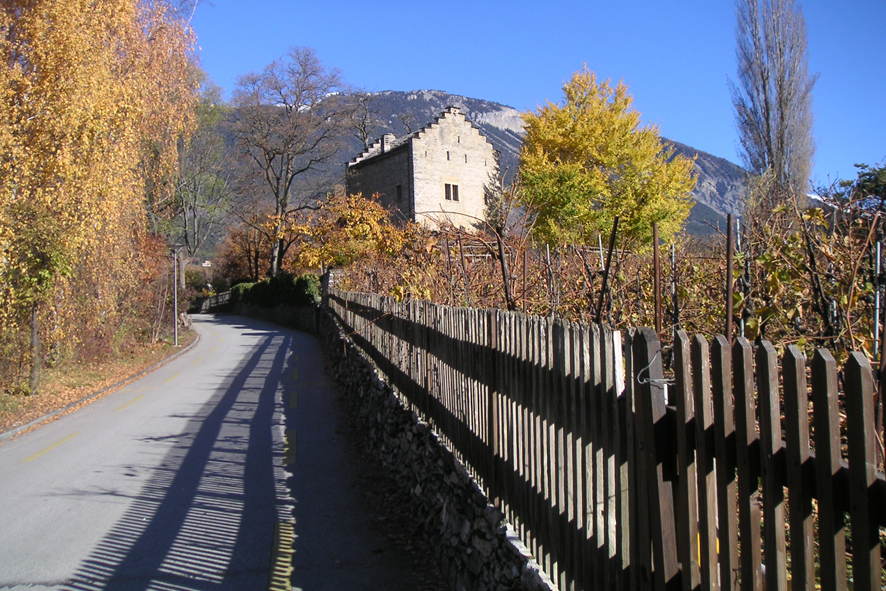|
New Poems
''New Poems'' (german: Neue Gedichte) is a two-part collection of poems written by Bohemian-Austrian poet and novelist Rainer Maria Rilke (1875–1926). The first volume, dedicated to Elisabeth and Karl von der Heydt was composed from 1902 to 1907 and was published in the same year by Insel Verlag in Leipzig. The second volume (New Poems: The Other Part), dedicated to Auguste Rodin, was completed in 1908 and published by the same publisher. With the exception of eight poems written in Capri, Rilke composed most of them in Paris and Meudon. At the start of each volume he placed, respectively, Früher Apollo (Early Apollo) and Archaïscher Torso Apollos (Archaic Torso of Apollo), poems about sculptures of the poet-God. These poems, many of them sonnets, are often intensely focused on the visual. They show Rilke aware of the objective world and of the people amongst whom he lives. The poems are astonishingly concentrated: both short, and compacting a profundity of experience ... [...More Info...] [...Related Items...] OR: [Wikipedia] [Google] [Baidu] |
Rainer Maria Rilke
René Karl Wilhelm Johann Josef Maria Rilke (4 December 1875 – 29 December 1926), shortened to Rainer Maria Rilke (), was an Austrian poet and novelist. He has been acclaimed as an idiosyncratic and expressive poet, and is widely recognized as a significant writer in the German language.Biography: Rainer Maria Rilke 1875–1926 Poetry Foundation website. Retrieved 2 February 2013. His work has been seen by critics and scholars as having undertones of , exploring themes of subjective experience and disbelief. His writings include one novel, several collections of poetry and several volumes ... [...More Info...] [...Related Items...] OR: [Wikipedia] [Google] [Baidu] |
Paul Cézanne
Paul Cézanne ( , , ; ; 19 January 1839 – 22 October 1906) was a French artist and Post-Impressionism, Post-Impressionist painter whose work laid the foundations of the transition from the 19th-century conception of artistic endeavour to a new and radically different world of art in the 20th century. Cézanne is said to have formed the bridge between late 19th-century Impressionism and the early 20th century's new line of artistic enquiry, Cubism. While his early works are still influenced by Romanticism – such as the murals in the Bastide du Jas de Bouffan, Jas de Bouffan country house – and Realism, he arrived at a new pictorial language through intensive examination of Impressionist forms of expression. He gave up the use of Perspective (graphical), perspective and broke with the established rules of Academic Art and strived for a renewal of traditional design methods on the basis of the impressionistic color space and color modulation principles. Cézanne's often re ... [...More Info...] [...Related Items...] OR: [Wikipedia] [Google] [Baidu] |
Sonnets To Orpheus
The ''Sonnets to Orpheus'' (german: Die Sonette an Orpheus) are a cycle of 55 sonnets written in 1922 by the Bohemian-Austrian poet Rainer Maria Rilke (1875–1926). It was first published the following year. Rilke, who is "widely recognized as one of the most lyrically intense German-language poets,"Biography: Rainer Maria Rilke 1875–1926 on the Poetry Foundation website. Retrieved 2 February 2013. wrote the cycle in a period of three weeks experiencing what he described a "savage creative storm."Polikoff, Daniel Joseph. ''In the Image of Orpheus Rilke: a Soul History''. (Wilmette, Illinois: Chiron Publications, 2011), 585-588. Inspired by the news of the death of Wera Ouckama Knoop (1900–1919), a playmate of Rilke's daughter Ruth, he dedicated ... [...More Info...] [...Related Items...] OR: [Wikipedia] [Google] [Baidu] |
Duino Elegies
The ''Duino Elegies'' (german: Duineser Elegien) are a collection of ten elegies written by the Bohemian-Austrian poet Rainer Maria Rilke. He was then "widely recognized as one of the most lyrically intense German-language poets", and began the elegies in 1912 while a guest of Princess Marie von Thurn und Taxis at Duino Castle, on the Adriatic Sea. The poems were dedicated to the Princess upon their publication in 1923. During this ten-year period, the elegies languished incomplete for long stretches of time as Rilke had frequent bouts with severe depression—some of which were related to the events of World War I and being conscripted into military service. Aside from brief periods of writing in 1913 and 1915, he did not return to the work until a few years after the war ended. With a sudden, renewed burst of frantic writing which he described as a "boundless storm, a hurricane of the spirit"—he completed the collection in February 1922 while staying at Château de Mu ... [...More Info...] [...Related Items...] OR: [Wikipedia] [Google] [Baidu] |
Torso Miletus Louvre Ma2792
The torso or trunk is an anatomical term for the central part, or the core, of the body of many animals (including humans), from which the head, neck, limbs, tail and other appendages extend. The tetrapod torso — including that of a human — is usually divided into the ''thoracic'' segment (also known as the upper torso, where the forelimbs extend), the ''abdominal'' segment (also known as the "mid-section" or "midriff"), and the ''pelvic'' and '' perineal'' segments (sometimes known together with the abdomen as the lower torso, where the hindlimbs extend). Anatomy Major organs In humans, most critical organs, with the notable exception of the brain, are housed within the torso. In the upper chest, the heart and lungs are protected by the rib cage, and the abdomen contains most of the organs responsible for digestion: the stomach, which breaks down partially digested food via gastric acid; the liver, which respectively produces bile necessary for digestion; the large and smal ... [...More Info...] [...Related Items...] OR: [Wikipedia] [Google] [Baidu] |
Gero Von Wilpert
Gero von Wilpert (13 March 1933 – 24 December 2009) was a German author, a senior lecturer in German at the University of New South Wales and, from 1980, Professor of German at the University of Sydney. Life and career Wilpert was born in Tartu (Dorpat), Estonia. Like all Baltic Germans, he was forced to leave Estonia after the Molotov–Ribbentrop Pact and the takeover of the country by the Soviet Union (1939–40). From 1953 to 1957 he studied at the University of Heidelberg, where he was at times a docent. He then settled near Stuttgart to work as independent author and lecturer. Wilpert published several editions of an encyclopedia of literary descriptions ''Sachwörterbuch der Literatur''. He also wrote a comprehensive ''Lexikon der Weltliteratur'' exicon of World Literatureand earlier had published his ''Deutsche Literatur in Bildern'' erman Literature in Picturesand a journal on Schiller. He was a member of the Australian Academy of the Humanities. Wilpert died in S ... [...More Info...] [...Related Items...] OR: [Wikipedia] [Google] [Baidu] |
Hugo Von Hofmannsthal
Hugo Laurenz August Hofmann von Hofmannsthal (; 1 February 1874 – 15 July 1929) was an Austrian novelist, librettist, poet, dramatist, narrator, and essayist. Early life Hofmannsthal was born in Landstraße, Vienna, the son of an upper-class Christian Austrian mother, Anna Maria Josefa Fohleutner (1852–1904), and a Christian Austrian–Italian bank manager, Hugo August Peter Hofmann, Edler von Hofmannsthal (1841–1915). His great-grandfather, Isaak Löw Hofmann, Edler von Hofmannsthal, from whom his family inherited the noble title "Edler von Hofmannsthal", was a Jewish tobacco farmer ennobled by the Austrian emperor. He was schooled in Vienna at Akademisches Gymnasium, where he studied the works of Ovid, later a major influence on his work. He began to write poems and plays from an early age. Some of his early works were written under pseudonyms, such as ''Loris Melikow'' and ''Theophil Morren'', because he was not allowed to publish as a student. He met the German poet ... [...More Info...] [...Related Items...] OR: [Wikipedia] [Google] [Baidu] |
Hydrangea
''Hydrangea'', () commonly named the hortensia, is a genus of over 75 species of flowering plants native to Asia and the Americas. By far the greatest species diversity is in eastern Asia, notably China, Korea, and Japan. Most are shrubs tall, but some are small trees, and others lianas reaching up to by climbing up trees. They can be either deciduous or evergreen, though the widely cultivated temperate species are all deciduous. ''Hydrangea'' is derived from Greek and means ‘water vessel’ (from ''húdōr'' "water" + ''ángos'' or ''angeîon'' "vessel"), in reference to the shape of its seed capsules. The earlier name, ''Hortensia'', is a Latinised version of the French given name Hortense, honoring French astronomer and mathematician Nicole-Reine Hortense Lepaute. This claim is disputed in page 88 on citation 10 at Nicole-Reine Hortense Lepaute page, which says: "Larousse considers this an injustice, and remarks that it has led many persons to the erroneous notion tha ... [...More Info...] [...Related Items...] OR: [Wikipedia] [Google] [Baidu] |
France
France (), officially the French Republic ( ), is a country primarily located in Western Europe. It also comprises of Overseas France, overseas regions and territories in the Americas and the Atlantic Ocean, Atlantic, Pacific Ocean, Pacific and Indian Oceans. Its Metropolitan France, metropolitan area extends from the Rhine to the Atlantic Ocean and from the Mediterranean Sea to the English Channel and the North Sea; overseas territories include French Guiana in South America, Saint Pierre and Miquelon in the North Atlantic, the French West Indies, and many islands in Oceania and the Indian Ocean. Due to its several coastal territories, France has the largest exclusive economic zone in the world. France borders Belgium, Luxembourg, Germany, Switzerland, Monaco, Italy, Andorra, and Spain in continental Europe, as well as the Kingdom of the Netherlands, Netherlands, Suriname, and Brazil in the Americas via its overseas territories in French Guiana and Saint Martin (island), ... [...More Info...] [...Related Items...] OR: [Wikipedia] [Google] [Baidu] |
Worpswede
Worpswede (Northern Low Saxon: ''Worpsweed'') is a municipality in the Osterholz-Scharmbeck, district of Osterholz, in Lower Saxony, Germany. It is situated in the Teufelsmoor, northeast of Bremen (city), Bremen. The small town itself is located near the Weyerberg hill. It has been the home to a lively artistic community since the end of the 19th century, with over 130 artists and craftsmen working there. History Its origin goes back to the Bronze Age. The first time it was mentioned however was in 1218. Then it belonged to the Archdiocese of Bremen, Prince-Archbishopric of Bremen. In 1630 it was occupied by Sweden for a short period of time. In 1648 the Prince-Archbishopric was transformed into the Duchy of Bremen, which was first ruled in personal union by the Swedish and from 1715 on by the Hanoverian Crown. However, it took another 120 years (1750) until the colonization of the Teufelsmoor was started by Jürgen Christian Findorff by drainage of the bog. In 1823 the Duchy was ... [...More Info...] [...Related Items...] OR: [Wikipedia] [Google] [Baidu] |






